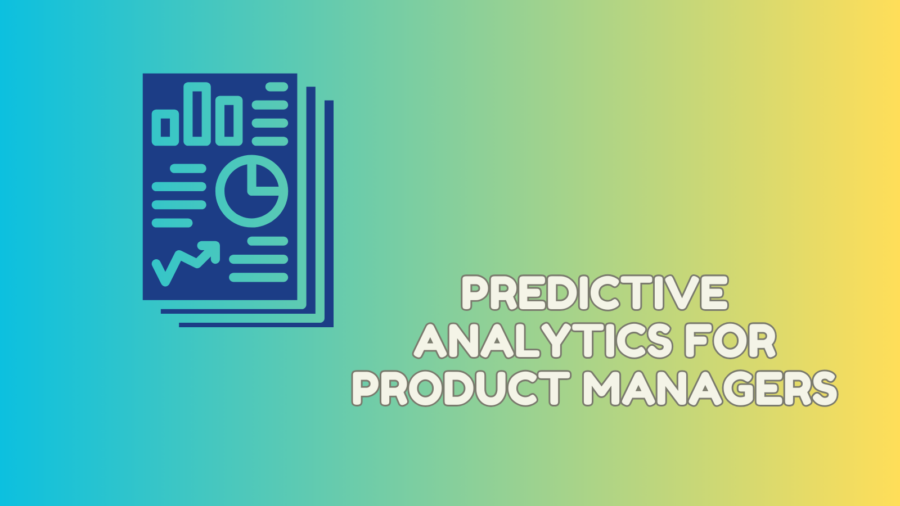Staying ahead of the competition requires more than just a great product. It demands a deep understanding of your customers and the ability to provide them with personalized experiences that keep them returning for more. Predictive analytics is the key to unlocking this potential.
In this blog post, we’ll explore how product managers can harness predictive analytics to drive product improvement and deliver personalized experiences that resonate with customers. We’ll delve into the concepts, strategies, and real-world examples that showcase the transformative power of predictive analytics in product development and personalization.
Understanding Predictive Analytics
Before we dive into the practical applications, let’s start with a brief overview of predictive analytics. At its core, predictive analytics is the process of using historical data, statistical algorithms, and machine learning techniques to identify patterns and make predictions about future events or behaviors. In the realm of product management, this means leveraging data to anticipate customer preferences, behavior, and needs.
1. Enhancing Customer Understanding
One of the primary benefits of predictive analytics is its ability to provide product managers with a deep and nuanced understanding of their customers. Product managers can create detailed customer profiles and segmentations by analyzing past purchase history, browsing behavior, and demographic information. This insight enables them to tailor products and marketing strategies to specific customer groups.
For instance, an e-commerce platform can use predictive analytics to identify high-value customers and offer personalized recommendations based on past purchases. This enhances the customer experience and increases sales and customer loyalty.
2. Forecasting Demand
Predictive analytics can also be a game-changer regarding inventory management and demand forecasting. By analyzing historical sales data and external factors like seasonality and economic trends, product managers can make more accurate predictions about future product demand. This allows them to optimize inventory levels, reduce waste, and ensure products are always available when customers want them.
3. Improving Product Features
Product improvement is at the heart of any successful business. Predictive analytics can help product managers identify areas where enhancements are needed. By analyzing customer feedback, usage data, and market trends, product managers can pinpoint which features or aspects of a product are underperforming or need modification.
For instance, a software company can use predictive analytics to identify the least-used application features and prioritize improvements in those areas. This data-driven approach ensures that development resources are allocated where they can have the most significant impact.
4. Personalized Marketing Campaigns
Personalization is no longer a luxury but a necessity in marketing. Predictive analytics empowers product managers to create highly personalized marketing campaigns that resonate with individual customers. By analyzing customer behavior and preferences, product managers can send targeted emails, offers, and content that are more likely to convert.
5. Churn Prediction
Losing customers can be costly, and predictive analytics can help mitigate churn. By analyzing customer behavior and historical data, product managers can identify warning signs that a customer may be considering leaving. Armed with this information, they can proactively reach out to at-risk customers with special offers or support to retain their business.
6. Pricing Optimization
Setting the right price for a product is a delicate balancing act. Predictive analytics can help product managers determine the optimal price point by considering factors such as customer willingness to pay, competitive pricing, and market demand. This data-driven approach can maximize profits while ensuring customers perceive value in the product.
7. A/B Testing and Experimentation
Predictive analytics can also guide A/B testing and experimentation efforts. Instead of blindly testing different variations, product managers can use predictive models to identify which changes will likely have the most significant impact. This saves time and resources and leads to more effective experiments.
8. Adapting to Changing Markets
Markets are dynamic, and what worked yesterday may not work tomorrow. Predictive analytics can help product managers stay agile and adapt to changing market conditions. Product managers can decide when to pivot, expand, or optimize their product offerings by continuously analyzing data and monitoring trends.
Real-World Examples
To illustrate the power of predictive analytics in product improvement and personalization, let’s look at a few real-world examples:
Netflix: The streaming giant uses predictive analytics to recommend movies and TV shows to its users. By analyzing viewing history, ratings, and user behavior, Netflix can suggest content that aligns with individual preferences, keeping viewers engaged and subscribed.
Amazon: Amazon’s product recommendations are a prime example of predictive analytics at work. The e-commerce giant uses customer data to suggest products that customers are likely to purchase, increasing sales and customer satisfaction.
Spotify: Spotify leverages predictive analytics to create personalized playlists for its users. By analyzing listening habits and user-generated playlists, Spotify can curate playlists that match users’ musical tastes, enhancing the overall listening experience.
Conclusion
Predictive analytics is a powerful tool that can drive product improvement and personalization to new heights. It enables product managers to understand their customers better, forecast demand accurately, enhance product features, and deliver personalized experiences that keep customers engaged and loyal.
As technology advances and data becomes more abundant, the role of predictive analytics in product management will only grow in importance. Product managers who embrace this data-driven approach will be better equipped to navigate the ever-changing business landscape and deliver products that truly resonate with their customers.
So, if you’re a product manager looking to take your products to the next level and create unforgettable personalized experiences, it’s time to harness the potential of predictive analytics. Your customers—and your bottom line—will thank you for it.


